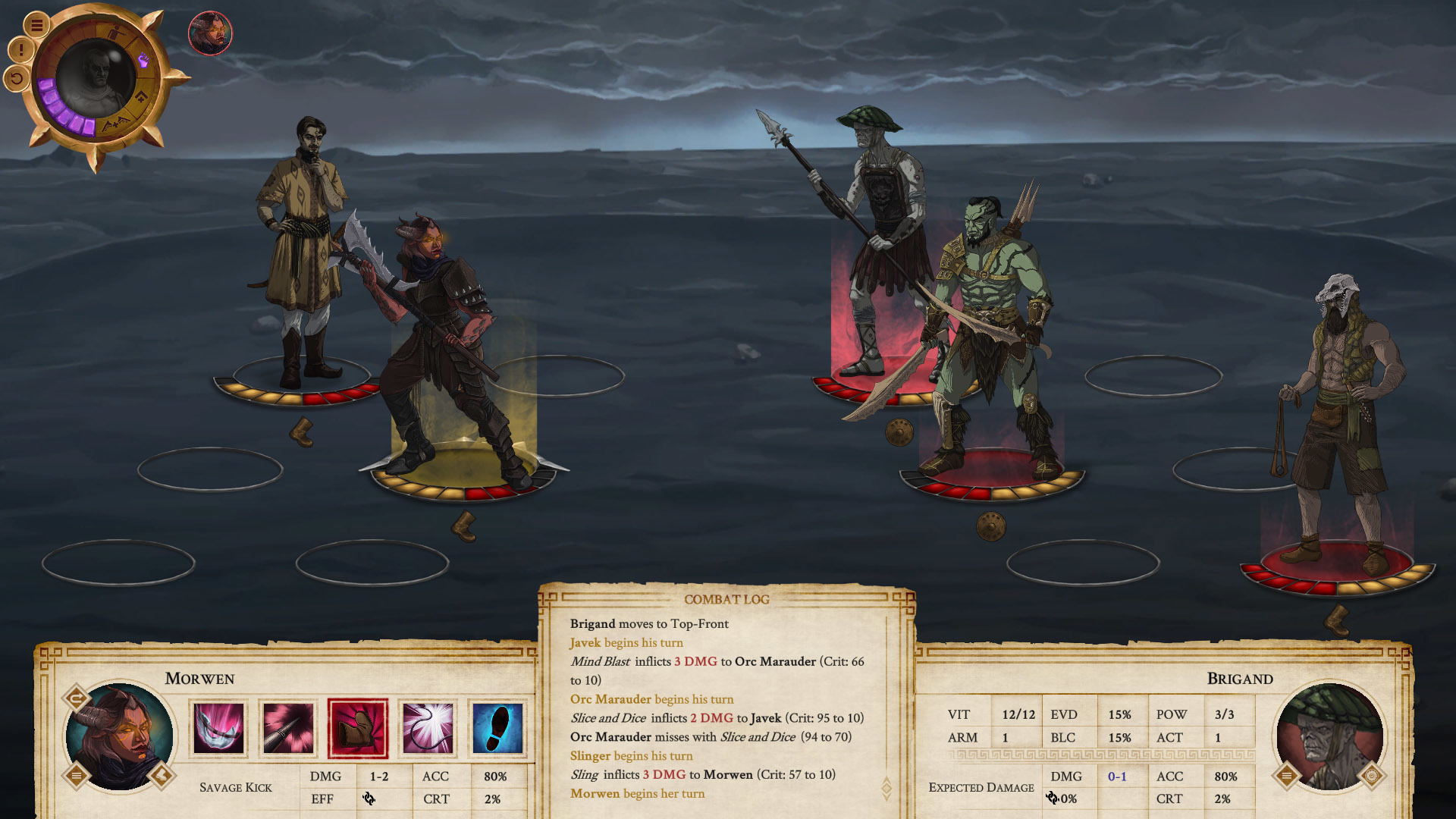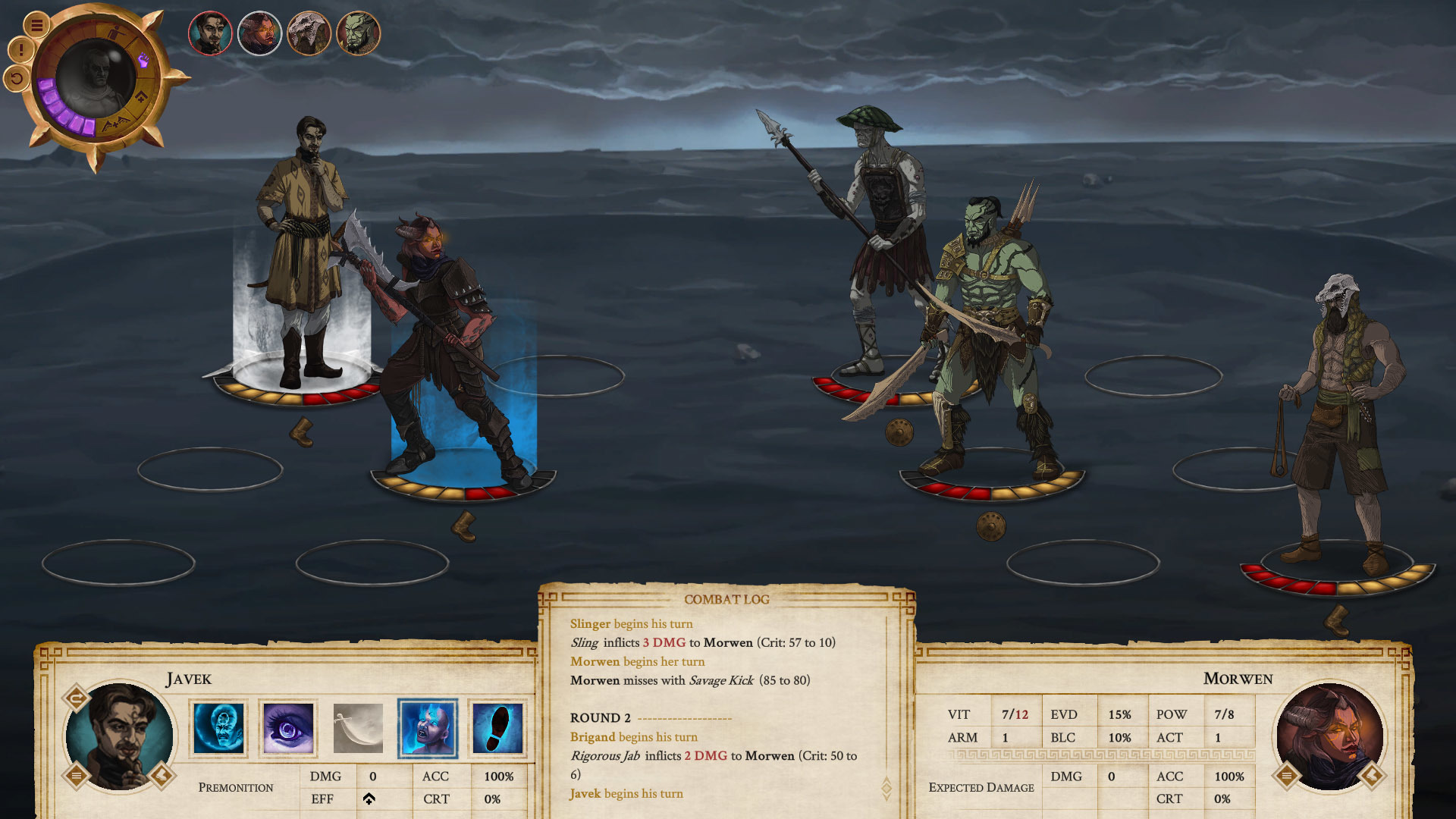Devlog #16 🔄⚔️ Companion Combat Guide - Part 4: Movement Effects 🏹☠️

In the last part of the Combat Guide we took a look at defenses and their importance. This time, we'll delve into effects that involve movement or its restriction in one way or another.
Many Combat Skills in Companion Combat deal some kind of additional effect; some of these involve forced movement on the target or the denial of movement.
Push and Pull
As discussed before, positioning in Companion Combat is paramount, stemming from the fact that many Skills can only be used from either the front or back line. It thus follows that Skills that can change the position of an opponent are very useful as they can deny them an action by making them spend their turn to reposition. These effects are resolved immediately.

Push is the most common of such effects. When a Skills that has Push connects with a front row target and causes damage (even if the damage is mitigated to 0), the target is pushed to the back row if the Resist roll is failed. If there is another opponent that occupies that position, they both lose 1 Vitality.

Pull does the opposite, that is, when connected (and dealing damage as well as not resisted), the effect pulls a back row target to the front row. This can be used very effectively to pull squishier or dangerous ranged opponents to the front where your melee squad can punish them severely.

Control
Certain Skill effects allow you to control the actions of your opponents, though these almost always allow you only to move with the opponent, not to use their Skills. Still, if done well, this free movement can very effectively disrupt the enemy's plans, positioning adversaries into vulnerable places or denying them actions.
Immobilize and Stun
There are also effects that outright deny movement and even actions in general when applied (after the Skill that has this effect connects, causes damage, and the effect is not resisted). These effects can last several rounds at a time.

A successful Immobilize denies the target the use of their Move action. They can still use their Skills available from that position but this may severely limit what they can do. Certain characters - when immobilized in the right position - can be forced to pass their turn as they can no do anything. A successful Stun forces the target to pass its turn, thus denying them all actions. Stun is a powerful effect that is usually costly to use and is thus limited.
Overwatch and Obstacles
There are other effects that can alter movement and positioning. Overwatch is a Skill type that allows a character to set an attack on an empty position: when an opponent moves onto (or is moved onto) such a position, the attack is triggered. Though the opponent does not see which empty position is overwatched, fear of triggering it may result in avoiding movement altogether.

Obstacles occupy a position but do not act. They have Vitality and can be targeted. When defeated they simply disappear from the battlefield. Some Skills spawn Obstacles that can be used either to give your back-row characters Cover or deny certain positions on the enemy side (by placing the Obstacle there).
As you can see, these movement-influencing effects can be useful in a large variety of situations. Keeping select enemies controlled in such ways is a very viable tactic to achieve victory even against unfavorable odds.
We hope this was interesting to some of you and even useful for learning the workings of Companion combat in Vagrus. We might return with further Combat Guides in the future.
Thanks for reading and following us,
The Lost Pilgrims Team
Website| Patreon| Discord Youtube | Twitter | Facebook| Instagram













